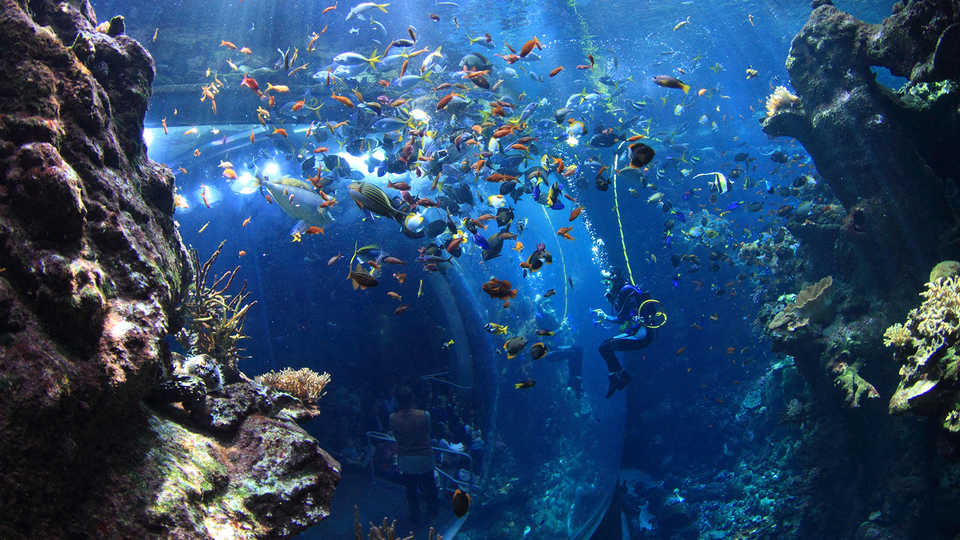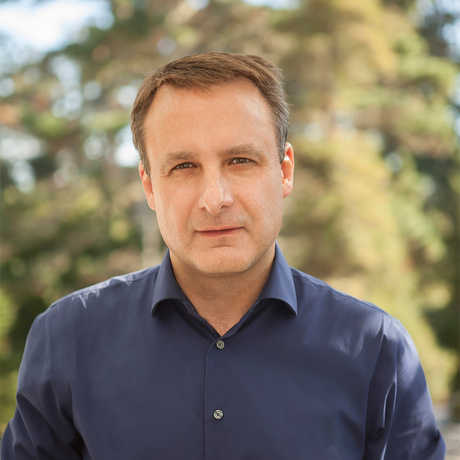An expert in ecosystem science and sustainability, Dr. Foley is steering the Academy through an exciting chapter in its 160-year history, leading its efforts to explore and explain the natural world while addressing critical sustainability challenges. Read his full bio.

What an incredible time to be a part of this organization!
Science and exploration are the heart of the Academy—built directly into our mission to “Explore, Explain, and Sustain Life”—and we’ve been investing in that core part of our work like never before. I’m pleased to share some exciting updates about our growing science staff, state-of-the-art facilities upgrades, and efforts to redouble our exploration efforts in the years ahead. We’re making bold moves, and it’s a joy to share all that’s happening with the wider world.
I made a big announcement at this year’s Big Bang Gala: the Academy is moving forward with an unprecedented investment in researching and restoring the Earth’s coral reefs, including an $8.5 million launching pad and the addition of two world-renowned curators, Drs. Rebecca Albright and Pim Bongaerts. This year, curator candidates from around the world told us they wanted to be a part of the Academy’s growing force for world-class science, outreach, and sustainability. We are thrilled to welcome Rebecca and Pim to our “dream team” of coral reef experts as part of our new sustainability efforts. You can read more about Rebecca and Pim—and our monumental exploration plans in marine shallows and mesophotic “twilight zone” reefs—here.
There’s more exciting news: Dr. Nathalie Nagalingum, multi-talented plant biologist and cycad expert, is also joining the Academy as one of our newest curators. Nathalie embodies the inspiring, history-making spirit of the Botany department that helped launch this institution—we couldn’t be happier to welcome her to the Academy family during this time of great change. Nathalie’s work (primarily in Australia, her current home) zeroes in on some of the most biodiverse regions on Earth, and uses scientific collections, climate modeling, and cutting-edge genomics to better understand—and help protect—endangered plants with ancient lineages. We’ll be sharing more about Nathalie’s new position and project plans closer to her start date in early 2017. It’s been a few years since her postdoctoral fellowship at UC Berkeley, so we can officially say, “Welcome back to the Bay Area, Nathalie!”
Nathalie, Rebecca, and Pim are simply one extraordinary part of our multi-year investment in scientific research and sustainability outreach. Prior to this recent “cluster hire,” we were fortunate to welcome Drs. Shannon Bennett, Meg Lowman, Michelle Trautwein, and Lauren Esposito—four scientists who are fundamentally shaping the ways Academy work impacts global sustainability outcomes and inspires more inclusive new generations of scientists ahead. In addition to that impressive lineup, we also welcomed Dr. Scott Loarie, a Patterson Scholar who expertly leads iNaturalist’s efforts to change the way we track wildlife on a global scale. And though I’m not running an active lab, I’m proud to be a part of our non-curator science leadership.
And we’re moving full steam ahead from here.
In addition to our giant new investment in coral reef research and conservation—which includes roughly 20 new marine expeditions, our upcoming exhibit Twilight Zone: Deep Reefs Revealed (opening June 10!), restoration partnerships with world leaders like SECORE International, and more—we’re continuing our search for additional expert curators over the coming years. Starting this fall, we’ll be looking for a Howell Chair of Western North American Botany, a position meant for a visionary botanist committed to exploring the wonders of the California Floristic Province. Stay tuned for more about our continued search for global experts who share our vision for the future of biodiversity science, exploration, and conservation.
There’s more. Our focus on Academy science means we also need world-class facilities to keep the ball rolling. More than ever, we’re increasing investments in our Center for Comparative Genomics, scientific computing, visualization, digitization, collections infrastructure, and cutting-edge scientific equipment. This is a time to invest more in scientific collections (our most valuable assets) and modern tools, and continue to build up the Academy as a global center of research excellence. We are doing that, and will continue this trend to ensure the strongest possible future for Academy science and the fields we’re working so hard—in the lab, the field, and our collections—to advance.
I am enormously proud to help chart the future of this great institution as we attract world experts to join our mission-driven team. I look forward to sharing more about this and our other new initiatives in the coming months. In the meantime, please do not hesitate to reach out to me if you have any questions or comments—you can find me on Twitter (@GlobalEcoGuy) or on Facebook. Thank you for your ongoing interest in and support of the Academy!
Best wishes,
Jon
Dr. Jonathan Foley
